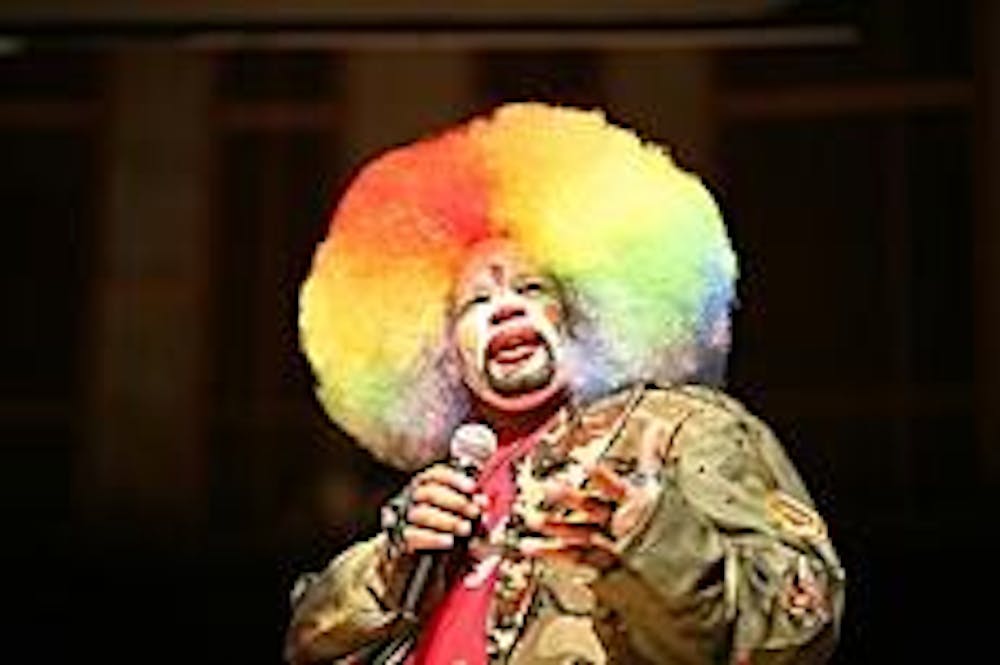Thomas Johnson, known internationally by stage name Tommy the Clown, is equal parts hip-hop hype man and street preacher. On Saturday, Johnson's competitive dance movement, known alternately as "krumping" and "clowning," was the subject of his performance with his troupe of Hip Hop Clowns at the Music Center at Strathmore in North Bethesda. Taking the stage in an oversized camouflage clown suit, the Father of Krump explained how his movement kept the 10 teenage clowns he'd brought with him out of L.A.'s violent gang culture.
"I thank God for these kids," Johnson said. "They made a choice to be a part of this. They chose to dance for Tommy."
Johnson introduced each dancer individually, allowing them time to showcase their talents. Krump is a dance composed of rapid-fire, spastic movements, an array of aggressive tricks. The dance style has been seen in music videos from Missy Elliot's "I'm Really Hot" to Madonna's "Hung Up." Johnson told the back-stories of each clown in a series of theatrical vignettes between the dances. Some, like Kenneth "Elmo" Stewart's, were heart-wrenching.
Born in prison to a drug-using mother, Stewart was discovered by Johnson. His story, like those of many of Johnson's Hip Hop Clowns, is one of hope in the face of adversity. "What you read in the papers is true," Johnson said.
"These kids come from a world of Crips and Bloods. Krump is about choices, about making a choice to stay out of the game. It is spiritual warfare and it is a battle," he said.
Following an intermission, Johnson came on stage wearing a referee costume. After the initial introduction of krump as a dance form, it was time to show the audience how krumping could be used as a nonviolent solution to conflict. The Battlezone, an annual dance competition created by Johnson, is an arena for krump crews to compete. The first Battlezone, featured in David LaChapelle's 2005 documentary "Rize," sold out the L.A. Forum.
In the most dramatic "battle" of the performance, Jesse "Rocco" Philpott and Beau Paul "Casper" Smart competed to see who was the greatest clown in Johnson's troupe.
"They got a situation to deal with, so we're going to deal with it here at Strathmore," Johnson said.
Philpott and Smart employed a variety of krump techniques, showing the diversity of the style. From floor play to slow-motion movement, krump references dance movements from '80s break dancing to San Francisco's "hyphy" style. The battle was all over when Philpott did a back flip off the Strathmore stage.
"It's a blessing to be a part of, to be a leader of, a movement that is all over the world," Johnson said. "Only God could take me to all these places."
Thomas Johnson was born in Detroit, and became involved in gang violence and drug culture when he moved to South Central L.A. as a teenager. After spending five years in prison, Johnson says his faith guided him to create the krump movement. Dance alone isn't powerful enough to keep kids from the flashy lifestyle of drugs and gangs, according to Johnson. Many of his dancers are the children and grandchildren of members of his church, whose guardians asked Johnson to take them under their wing.
"I learned in church that no matter what you are or who you are, everyone goes through ups and downs in life," Johnson said. "But no matter what, you pray"





